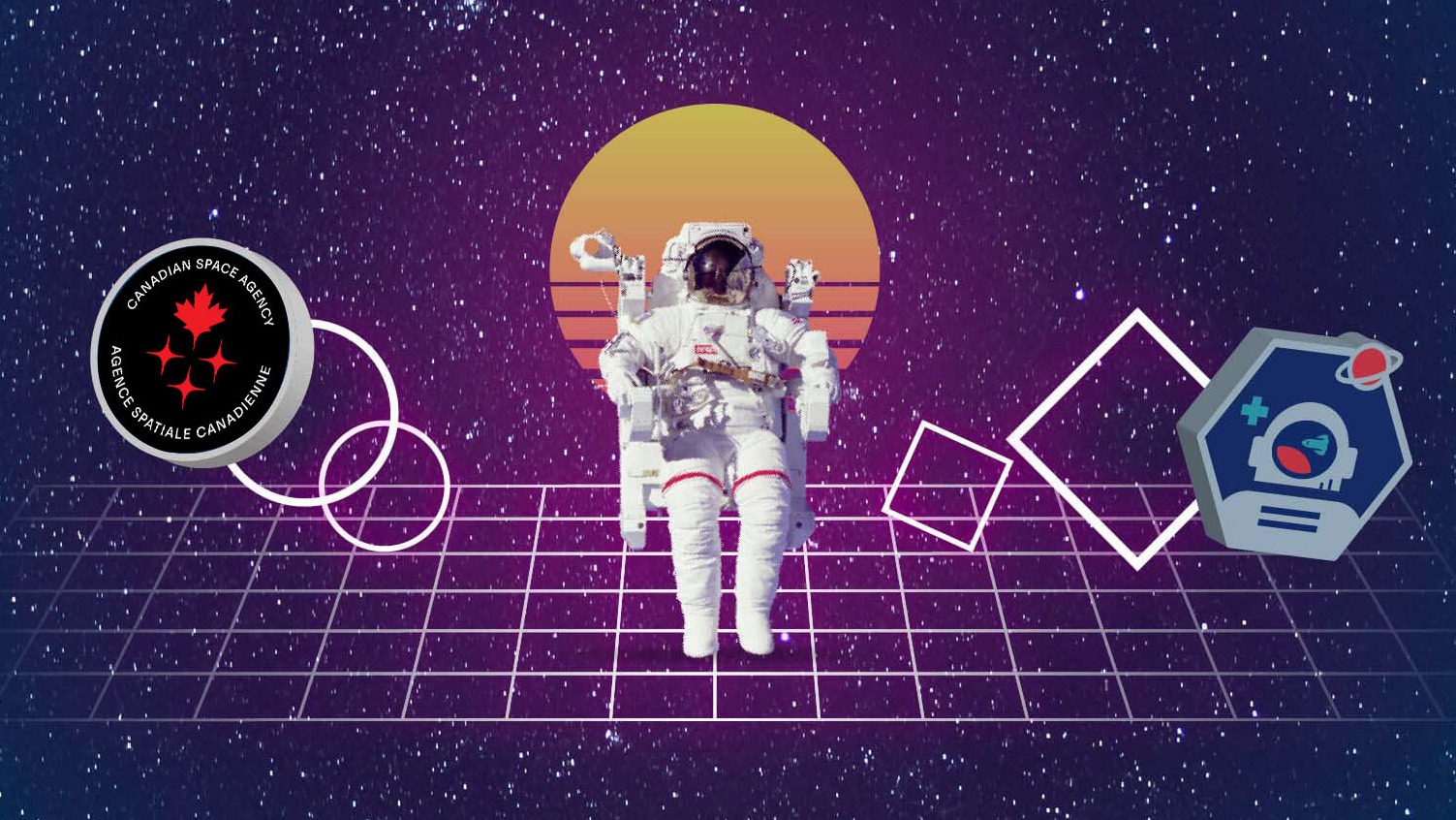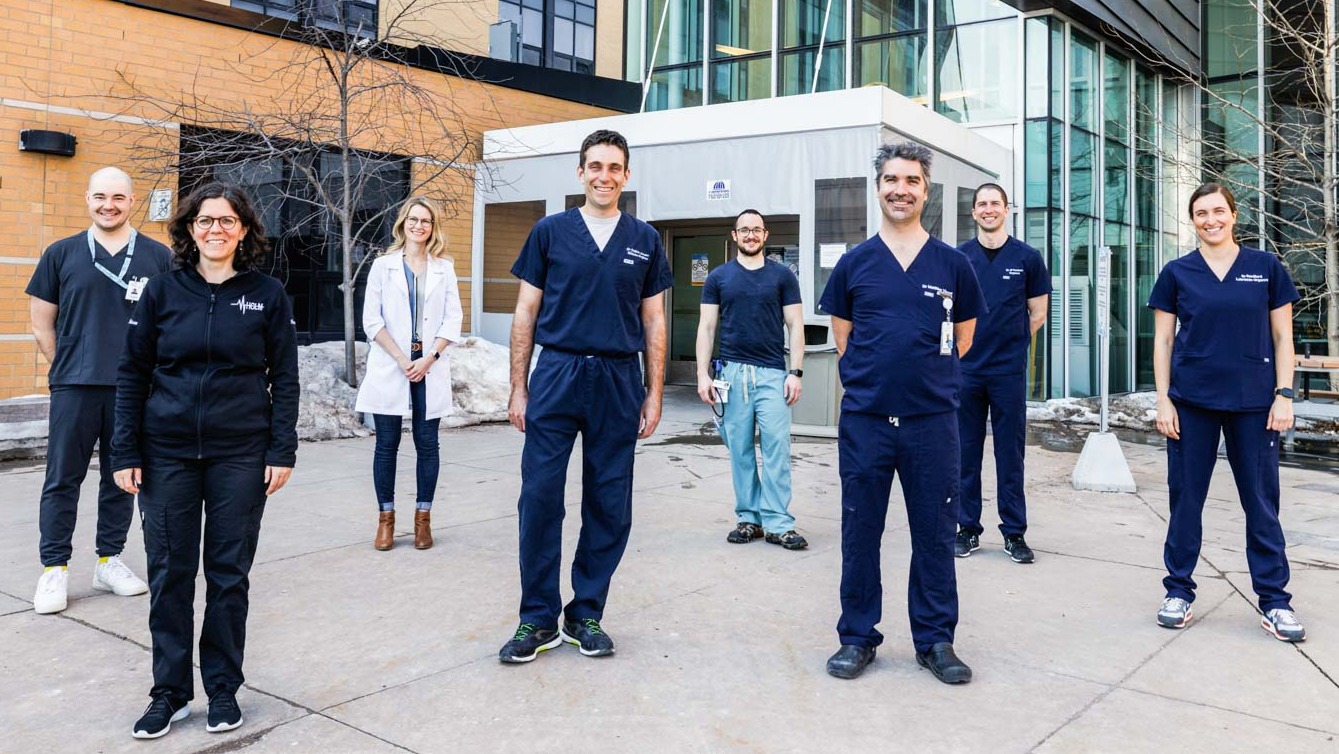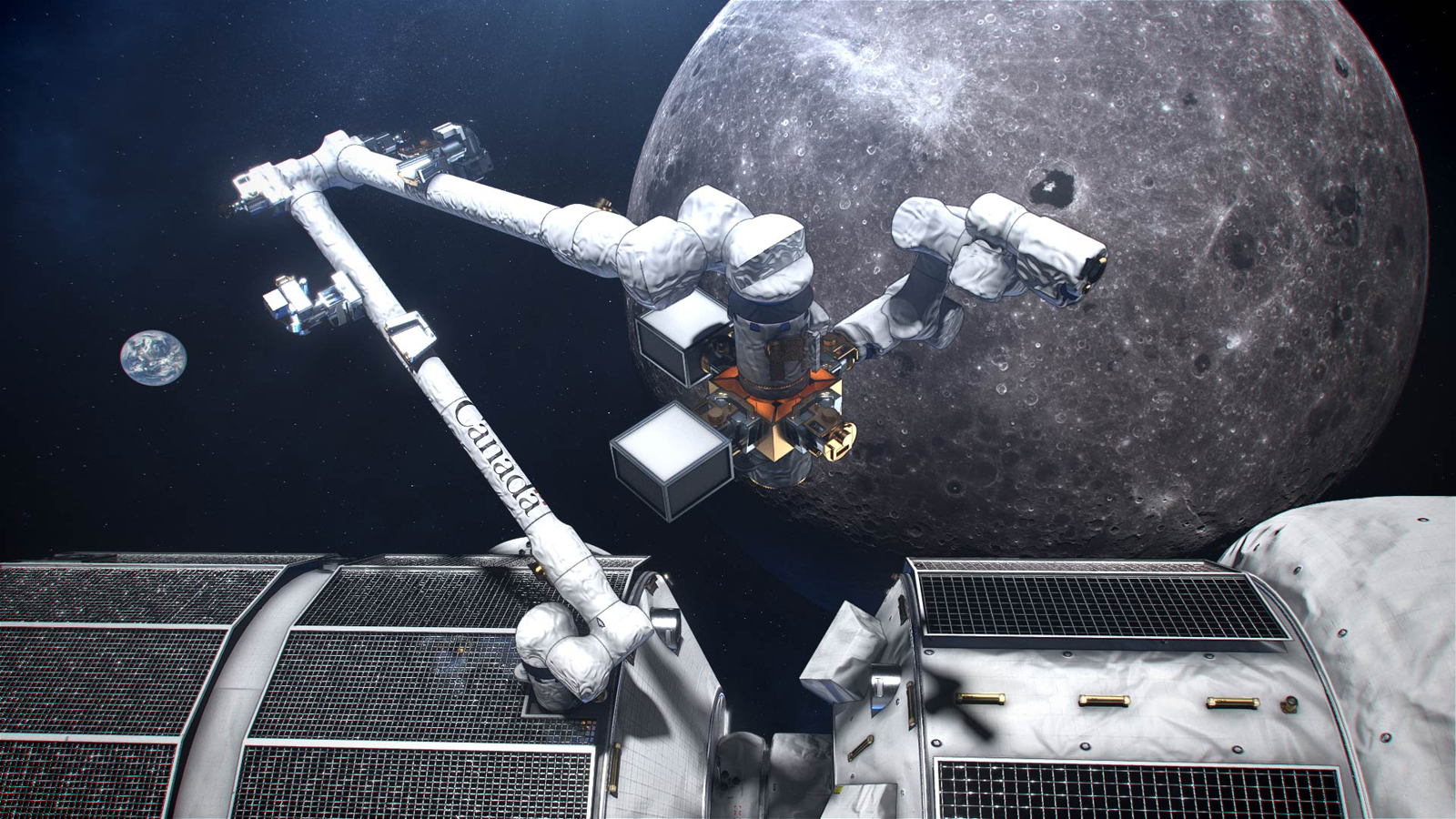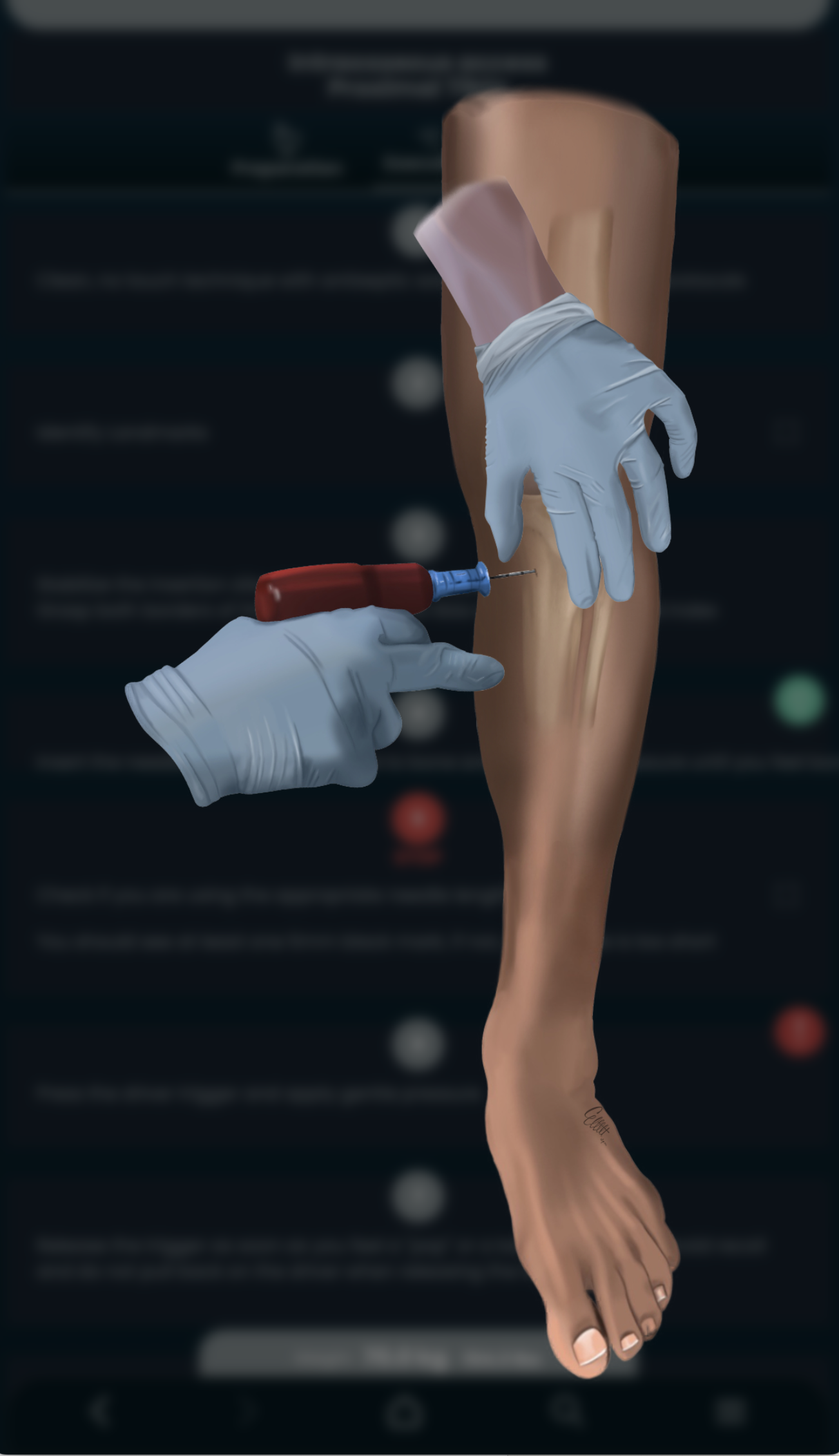Medical emergencies will happen in deep space. Here's how Canada is getting ready
Five finalists in a tech competition have ideas to keep future astronauts safe.

When astronauts fly to the moon or Mars, how we will take care of medical issues so far from home?
Finalists in a Canadian Space Agency and Impact Canada tech challenge aim to pivot medical knowledge from working with remote communities — like Indigenous groups in Canada's far north — to help astronauts in deep space.
The five finalists for the Canadian government's Deep Space Healthcare Challenge made presentations in Montreal on Tuesday (Nov. 21) explaining why their technology may one day be worthy of a space mission. At stake for the future winner is a rich half-million-dollar purse in Canadian dollars (roughly $365,000 USD).
"What was really interesting was to actually apply the physical constraints of space" to medical practice, competition participant and emergency physician Frédéric Lemaire told Space.com. Lemaire, who works a the Charles-LeMoyne Hospital on the south shore of Montreal, is one of 32 people working on the EZResus resuscitation app. The tool, from the non-profit Applications MD, gives instructions for this vital medical procedure when you're far from help.
Related: Can we live long and prosper in space? The astronaut health dilemma
The CSA is one of the partners for NASA's Artemis program missions to the moon, which aims to land astronauts there in 2025 or 2026. (Some Artemis partners have signed on for NASA-led peaceful space exploration norms rather than immediate moon missions, however.)
Already humans are on the way to lunar realms: Artemis 2, including CSA astronaut Jeremy Hansen and three NASA astronauts, will fly around the moon in 2024. (That's on top of other space missions the CSA makes to the International Space Station, including new Canadian astronaut assignments just announced Wednesday, Nov. 22.)
Breaking space news, the latest updates on rocket launches, skywatching events and more!
But far away from Earth, on a spacecraft with limited resources, astronauts will need to use all their skills to keep each other healthy. The challenge aims to create highly portable technology that will allow rapid diagnoses and treatment in case of health issues. Like a tricorder from "Star Trek," the astronauts can then use that information to keep each other safe and healthy when challenges arise.
The competition is part of the CSA's goal to help empower astronauts to take care of their own health with up-to-date tools, the agency's Annie Martin told Space.com. Martin is a portfolio manager with CSA's Health Beyond Initiative, which includes this competition and other projects.
"We asked innovators to look at solutions that could support and that could help Canadians now," she said, with moon and Mars missions being considered as well as near-term needs. "We were really excited to see all those technologies that have concrete applications."
Martin outlined numerous issues that make it difficult to perform medicine in space. Examples include communications delays of seconds or minutes, depending on how far you go; the fact that emergency evacuation would take days, weeks or months; and providing the right training for everyone on a mission, as not all folks are medical professionals by nature.
Tools are on the way, like artificial intelligence — the CSA plans to use it anyway on future space missions, like the forthcoming Canadarm3 robotic arm for the NASA Gateway space station at the moon. And there could be good Earth experience to bring to bear for space missions as well, ranging from serving remote Indigenous communities to helping soldiers on deployment in harsh conditions.
The "big day" for finalists on Tuesday saw the five groups present their solutions and offer a live demonstration to the jury. They have had support from CSA officials through these last few stages to ease development (the team for EZResus, for example, spent an hour a few months ago with the chief medical officer of CSA.)
But to meet the teams a last time in person, and to let the teams speak together, was deliberate as the CSA wants to "foster collaboration, because innovation is not done in isolation," Martin emphasized.
Martin joked that selecting a winner among the quintet of finalists would be like selecting her favorite child. While there are no plans to further develop the tech through CSA after the winner is declared, the companies are welcome to apply for future opportunities. An example could be the agency's Space Technology Development Program that makes early-stage projects more ready for spaceflight.
All the finalists have been working on their proposals for about two years, having submitted their work for the first stage of the competition in February 2022. But some ideas were in the works for much longer.
EZResus, in fact, is a continuation from a past app called EZDrips, which itself came from a "tough case" Lemaire faced fully 10 years ago. His team was struggling to resuscitate a child back then, and at the time there was no app giving him a calculation to do the right dosage of drugs.
"We were trying to do the calculation with a huge amount of stress, because the kid is dying, right?" Lemaire recalled. "Finally we were able to do it. The kid was fine, but at the end, I was like, 'We need to do something about that'. "
The initial call for competition ideas was whittled down to 20 semi-finalists, announced in April 2022. After a proof of concept was delivered to judges, the group narrowed to the five finalists in April 2023.
Assessment criteria include how effective the solution is at detecting or diagnosing medical problems, as well as other metrics such as innovation, increasing the autonomy of remote crews, reliability and ease-of-use.
Judges will spend the following months evaluating the submissions made today to declare the grand prize winner in early 2024. The other finalists, according to Impact Canada's website, include:
- Centre for Surgical Invention and Innovation: An autonomous robotic system capable of screening, point of care diagnosis and treatment of early cancers that can be operated remotely or with no human interaction, when required.
- IndigenousTech.ai: Autonomous AI-driven software and an imaging device attachable to a smartphone for remote monitoring and diagnosis of skin conditions, under remote supervision of a specialized dermatologist.
- SieVRt Cardiac: An extended reality platform for remote radiology and the diagnosis and monitoring of cardiovascular disease.
- Neursantys: The Neurvesta wearable device enables remote detection and correction of neurovestibular and sensorimotor disruptions caused by aging, injuries, disease, and exposure to microgravity environments.

Elizabeth Howell (she/her), Ph.D., was a staff writer in the spaceflight channel between 2022 and 2024 specializing in Canadian space news. She was contributing writer for Space.com for 10 years from 2012 to 2024. Elizabeth's reporting includes multiple exclusives with the White House, leading world coverage about a lost-and-found space tomato on the International Space Station, witnessing five human spaceflight launches on two continents, flying parabolic, working inside a spacesuit, and participating in a simulated Mars mission. Her latest book, "Why Am I Taller?" (ECW Press, 2022) is co-written with astronaut Dave Williams.



